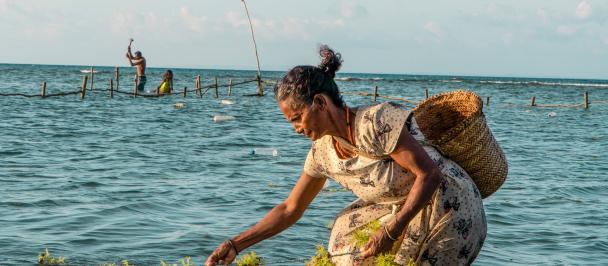How a decade of public-private partnership has helped in restoring 1,600 hectares of degraded cocoa landscapes in Ghana.
The muscle behind the push for sustainability
December 11, 2023
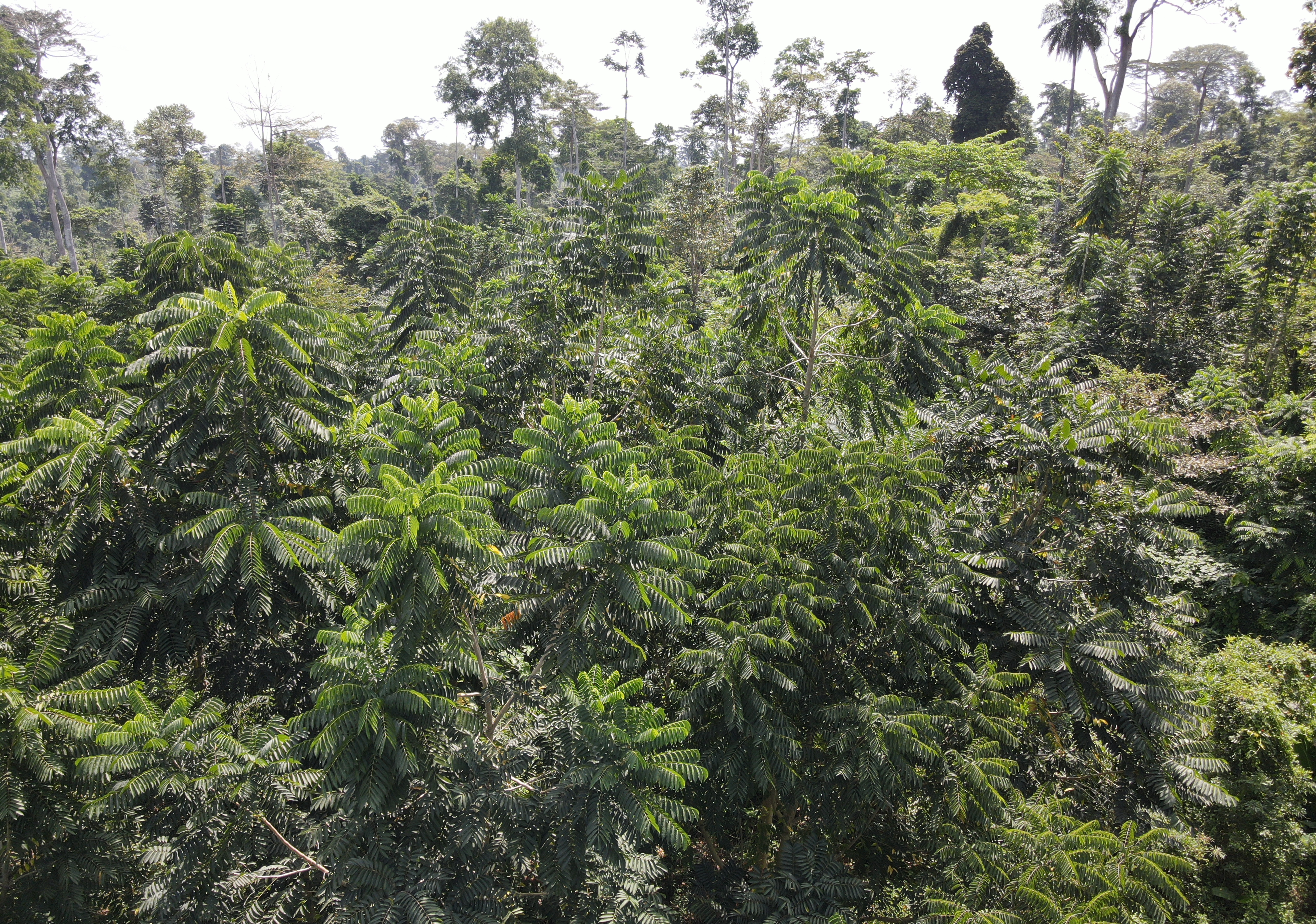
Aerial shot of a portion of the restored Cocoa Landscape under the UNDP-Mondelez-Ghana-Cocoa Board project. Through the project, farmers have over the decade planted over 2 million trees, restoring 1,600 hectares of degraded cocoa landscapes in Ghana.
Adjoa Adomaah was born and grew up in Akwaduro in the Asunafo North Municipal of the Ahafo Region of Ghana. In the past, she recalled how she and other women used to visit the Ayum Forest Reserve to pick non-forest products like snails, nuts, fuelwoods, mushrooms, and medicinal plants among others. As the years passed by, she witnessed how the forest started disappearing.
“Before, we were benefiting a lot from the forest. Then, people were coming to the village to cut the trees and the forest started disappearing. We tried to stop them, but they won’t listen”, Adjoa recounted.
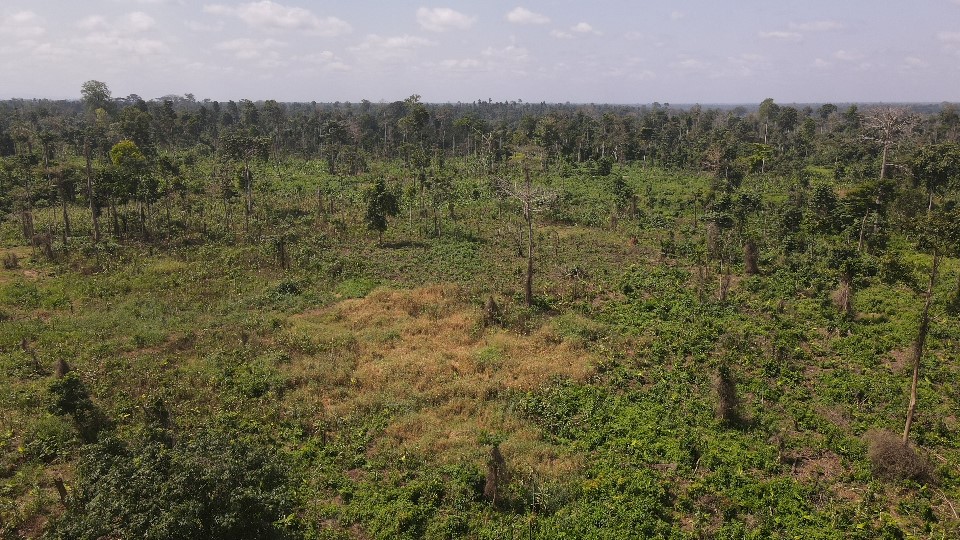
An aerial shot of a portion of the degraded Ayum Forest Reserve
Consequently, Adjoa noticed excessive rise in temperatures and irregular rainfalls over the years. This, she said, affected their food crops yields to the point that it became a daily struggle for her to put a full meal on the table. “Getting food for my children became a challenge due to poor harvest”, Adjoa noted.
Despite the odds, Adjoa was looking forward to a brighter future. “We were worried because we were no longer getting benefits from the forest. Then a project team came and promised to support us to restore the forest. I joined the project because I wanted the forest to come back for us to benefit”.
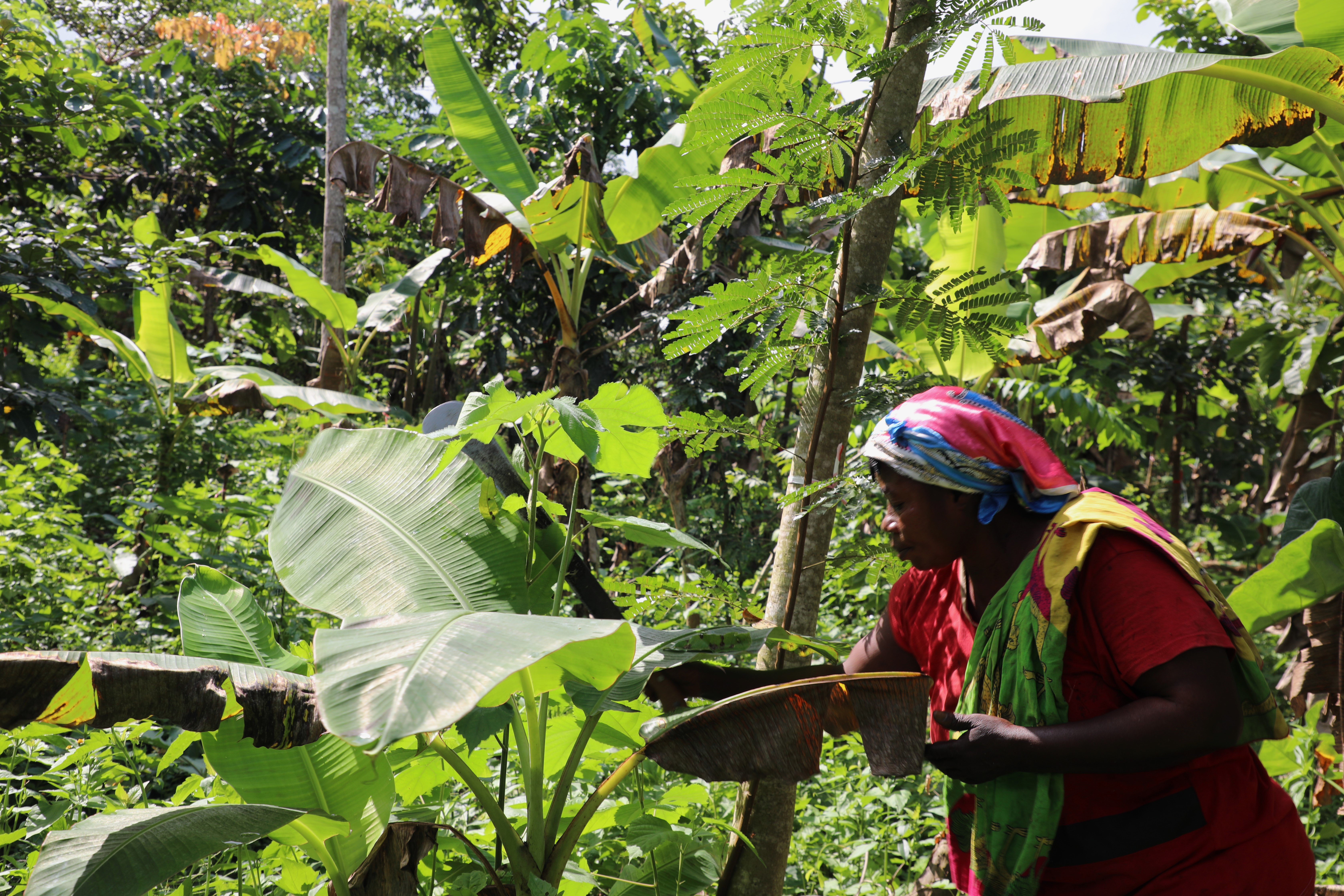
Adjoa Adomaah working in her farm.
Public-Private Partnerships: The Smart Way to Go
As narrated by Adjoa, it is obvious that local communities depend on forests and these ecosystems are fundamental to the survival of humanity. To mitigate the impacts of the changing climate, it is important to invest in nature. Investing in nature can only happen on a scale if the public and private sectors work together.
In this regard, the Mondelez Cocoa Life Programme teamed up with the Ghana Cocoa Board (COCOBOD) and the United Nations Development Programme (UNDP) to restore degraded forests in Ghana’s cocoa landscapes. This is to alleviate climate change impacts on the communities and enhance livelihoods.
“Mondelez wants to source cocoa from responsible areas as required. So, the company decided to get involved in this forest rehabilitation project as their contribution to Ghana’s climate mitigation efforts, noted Atsu Titiati, the Project Coordinator.
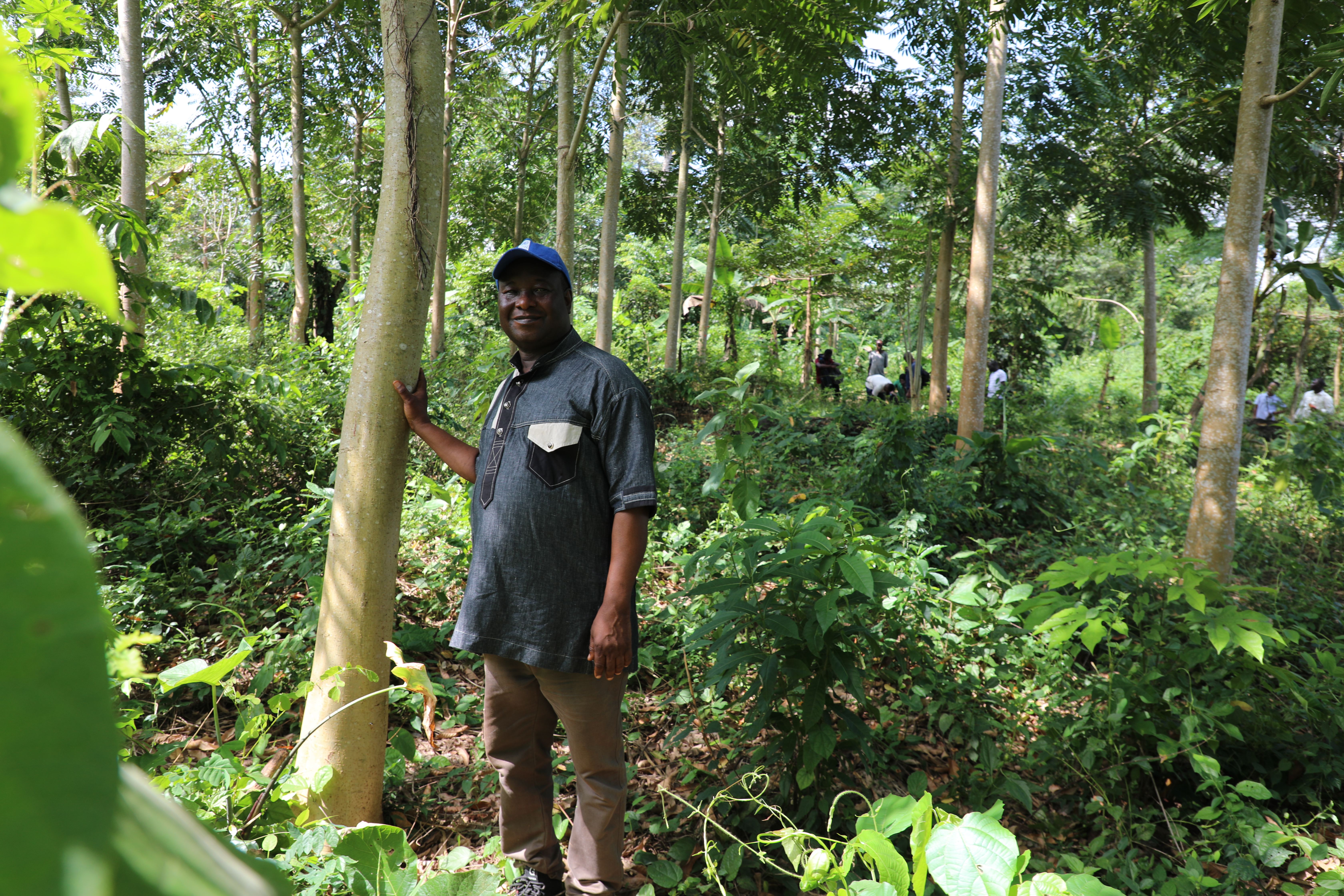
Atsu Titiati, the Project Coordinator happy with the success of the project.
Through the partnership, the project titled “Environmentally Sustainable Project (ESP)” has since 2013 empowered 355 local communities across Ghana to restore the lost biodiversity that underpins their livelihoods. Over the decade, the project worked with 46,000 farmers (including 22,000 women) in 12 districts in six regions (Ahafo, Ashanti, Central, Eastern, Western, and Western North) across Ghana. The farmers were trained and supported with agricultural inputs to integrate indigenous and economic trees with food crops in degraded forest reserves and in cocoa farms.
“It would have taken the Ghana Cocoa Board a longer time to do this alone. The partnership with Mondelez & UNDP made this possible. Without the funding from Mondelez, we couldn’t have done this alone”, stated Simon Crown, Manager at COCOBOD and the ESP Focal Person.
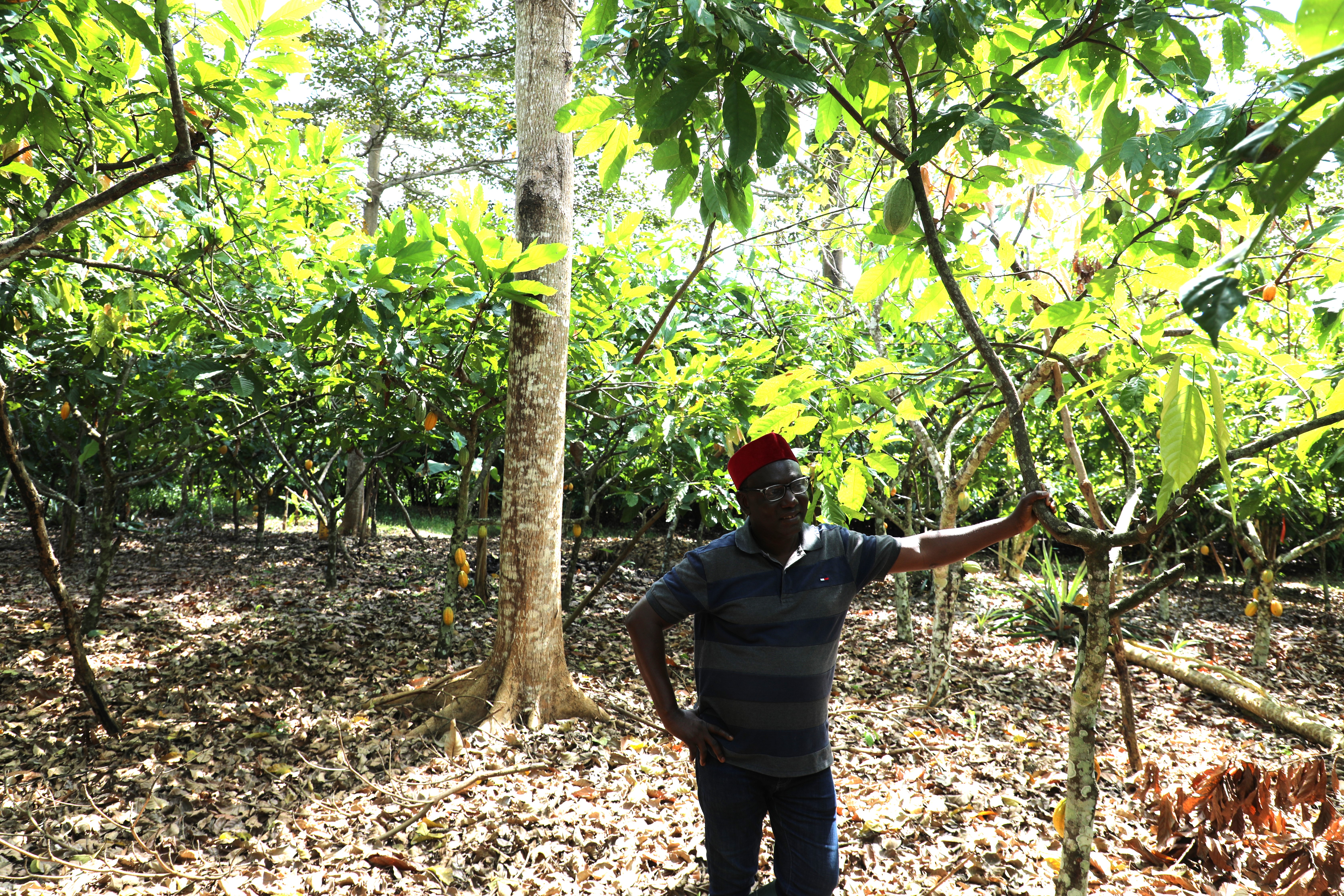
Mr. Simon Crown, Manager at COCOBOD and the ESP Focal Person in one of the cocoa farms.
Within the 10 years, over 2million trees have been planted, restoring about 1,600 hectares of degraded areas in the cocoa landscapes. This has enhanced both trees and carbon stocks on cocoa farms and in the forest reserve as a climate change mitigation measure.
“I am happy I joined the project. Currently I have 5 acres of food crops farm with trees in the degraded area in the Ayum forest. The yield is good because the rain now comes often. I might say there is no more quarrel in my marriage and home over scarce income and food”, Adjoa indicated.
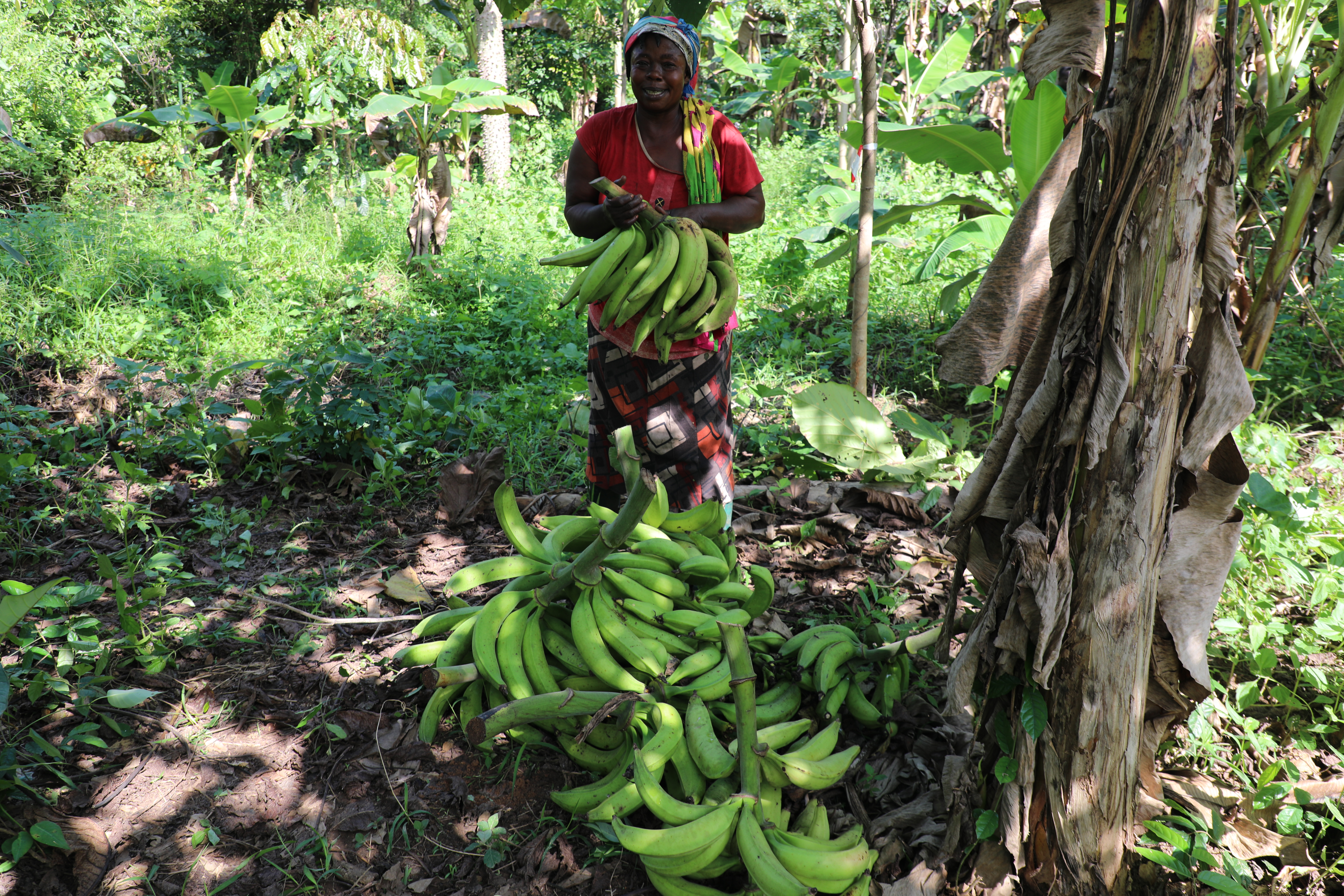
Adjoa Adomaah all smiles with her bumper harvest.
Trees are the ultimate carbon storage machines. It is estimated that 400 tons of carbon can be locked into just one hectare of forest.
“I have planted 300 trees in my 15acre cocoa farm. The trees provide adequate shade to the cocoa trees and prevent the weeds from growing. They also give the soil low temperature, making the cocoa pod smooth and the leaves greener for good yields”, stated Joseph Akwertey, Cocoa Farmer in the Wassa East District in the Western Region of Ghana.
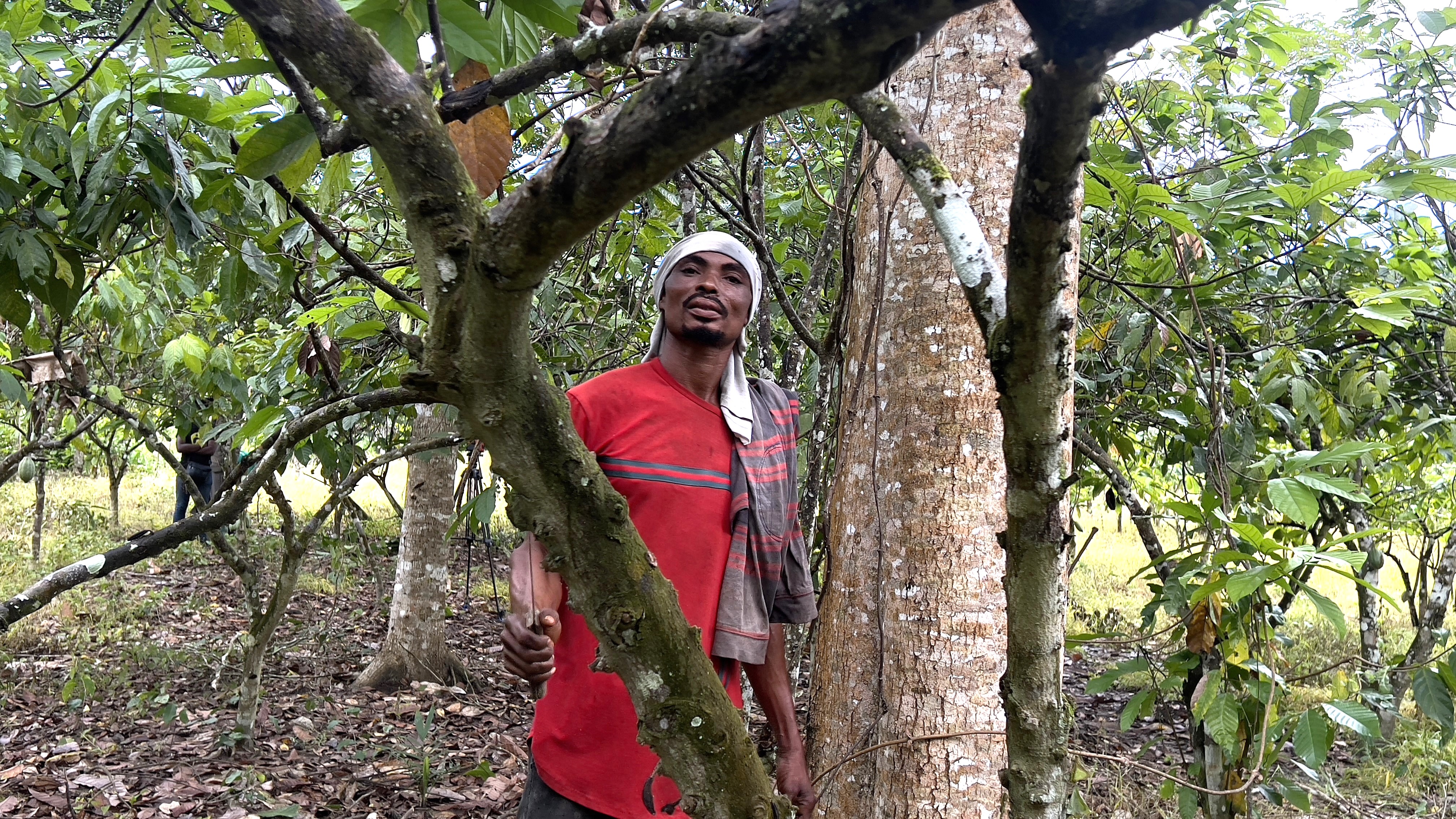
Joseph Akwertey in his cocoa farm.
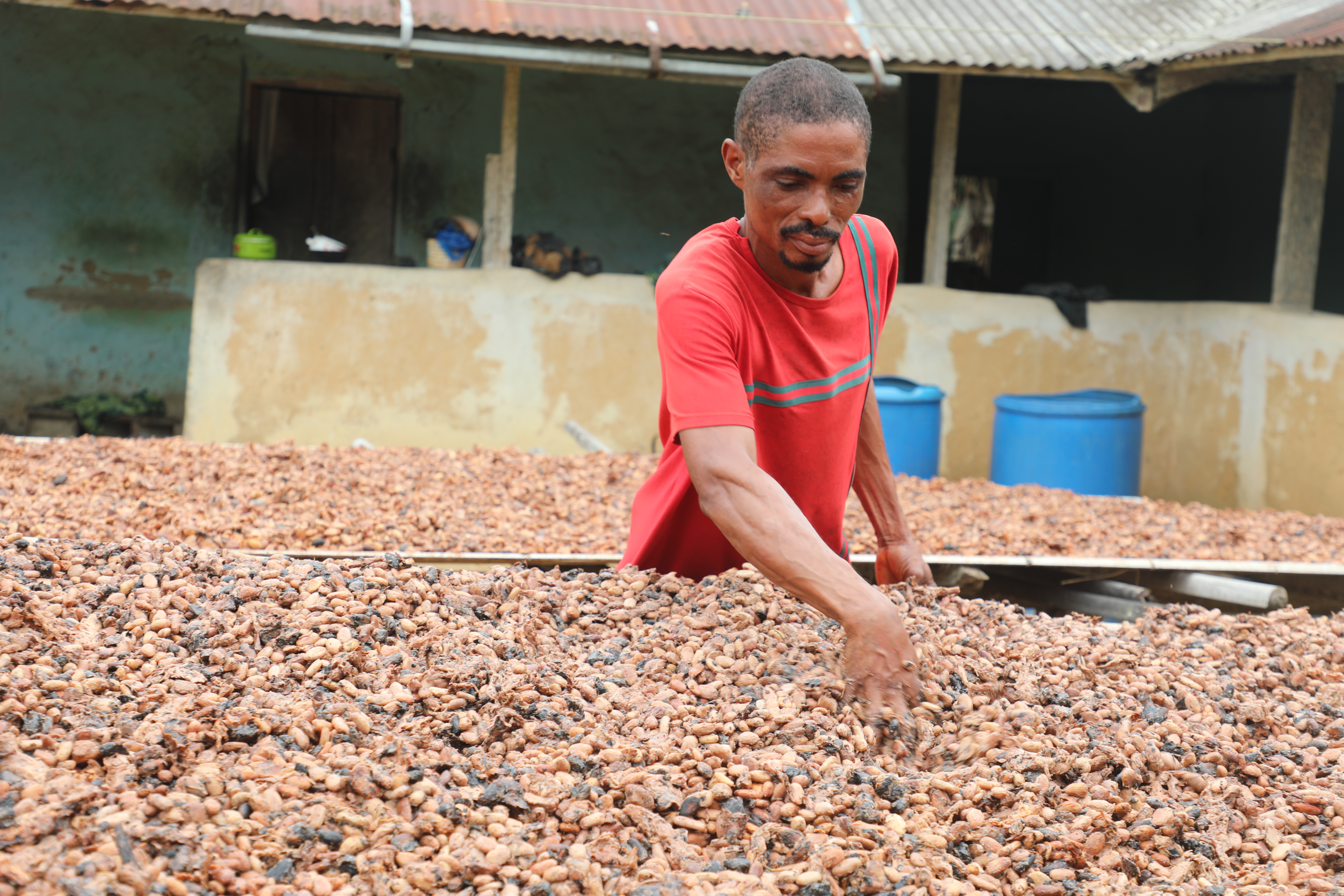
Joseph Akwertey drying his cocoa beans.
The change resulting from taking action to restore the degraded areas is transformative. Mary Nsia, popularly known as Aunty Afua has been farming for 25years in Duase, also in the Asunafo North Municipal in the Ahafo Region. She also recounts the benefits of integrating trees in her 25.5 acres of cocoa farms.
“Years ago, the cocoa leaves have been falling due to too much heat because there were no trees in the farms. But now that I have the trees, I get about 300 bags of cocoa beans per harvest from my 25.5 acres. In the past, it was difficult to get even one bag per acre during a harvest season”, Afua narrated.
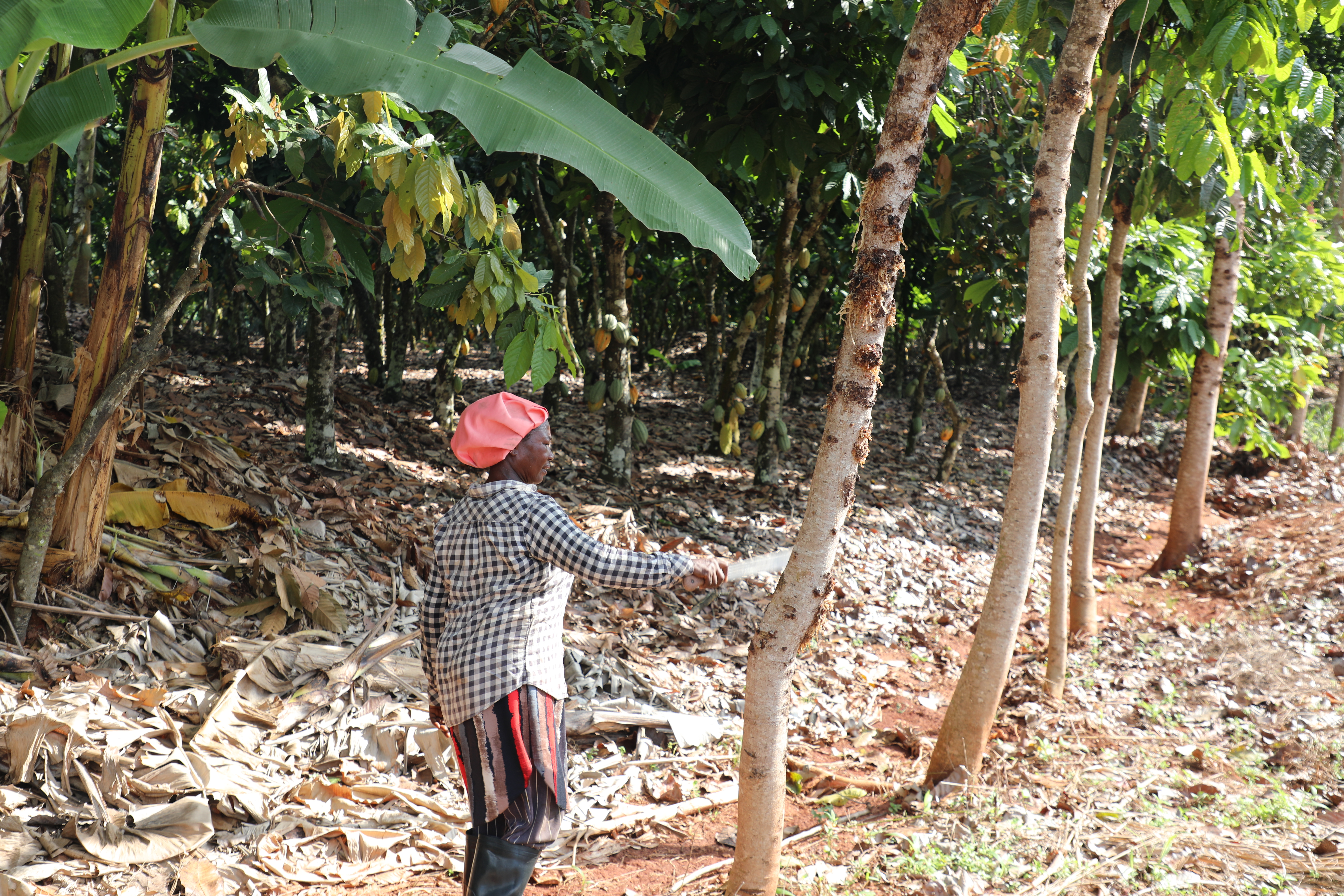
Aunty Afua has been farming for 25years in Duase. She recounts the benefits of integrating trees in her 25.5 acres of cocoa farms.
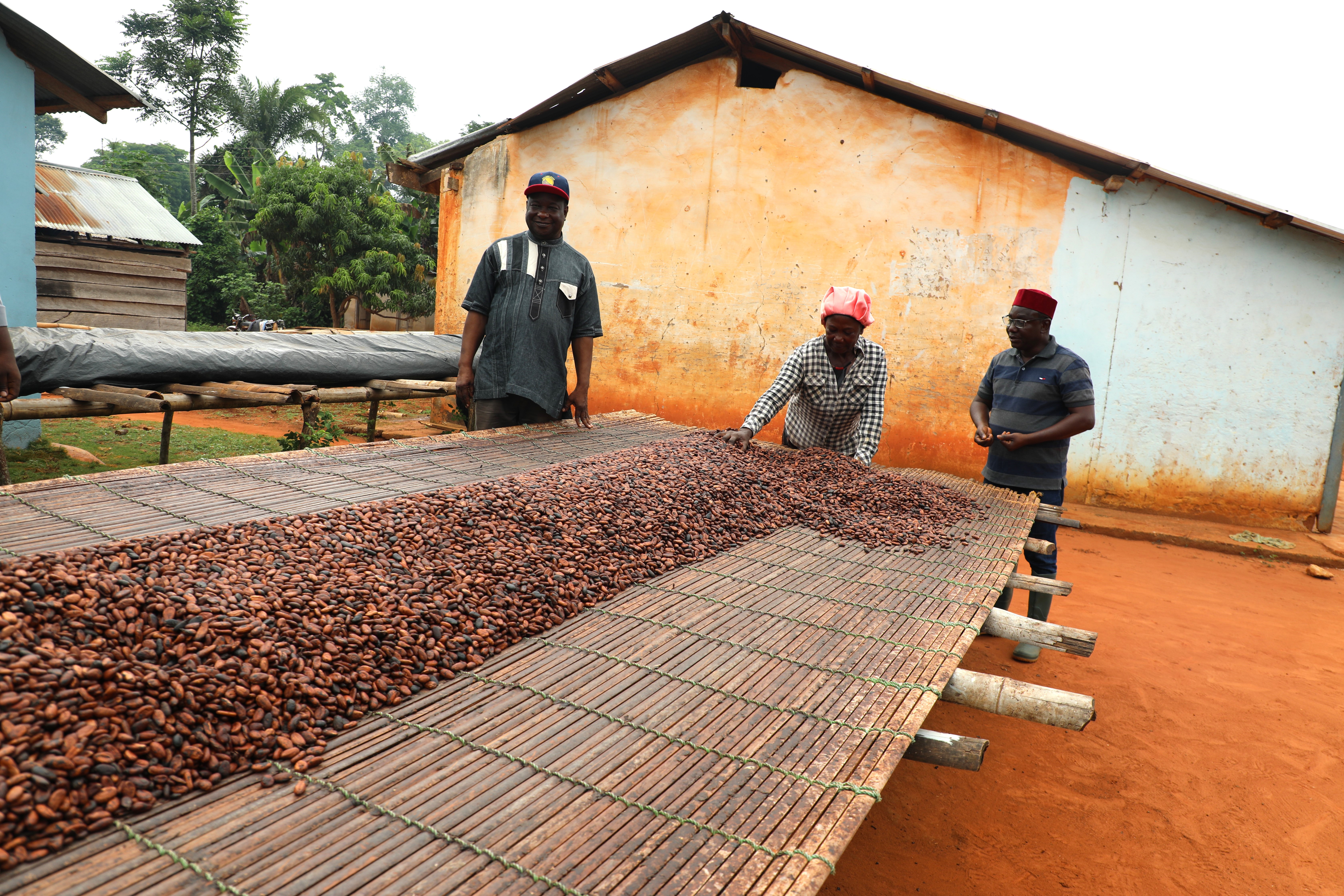
Aunty Afua drying her cocoa beans.
For the industrious Afua, adopting best environmental practices in her cocoa farms is more than rewarding. “Because I practice what I learnt from the project, my cocoa farm is admired and this year, I was adjudged the 2023 Regional Best Farmer. I got Ghc20,000 cash and machinery. I am very happy”, elated Afua added.
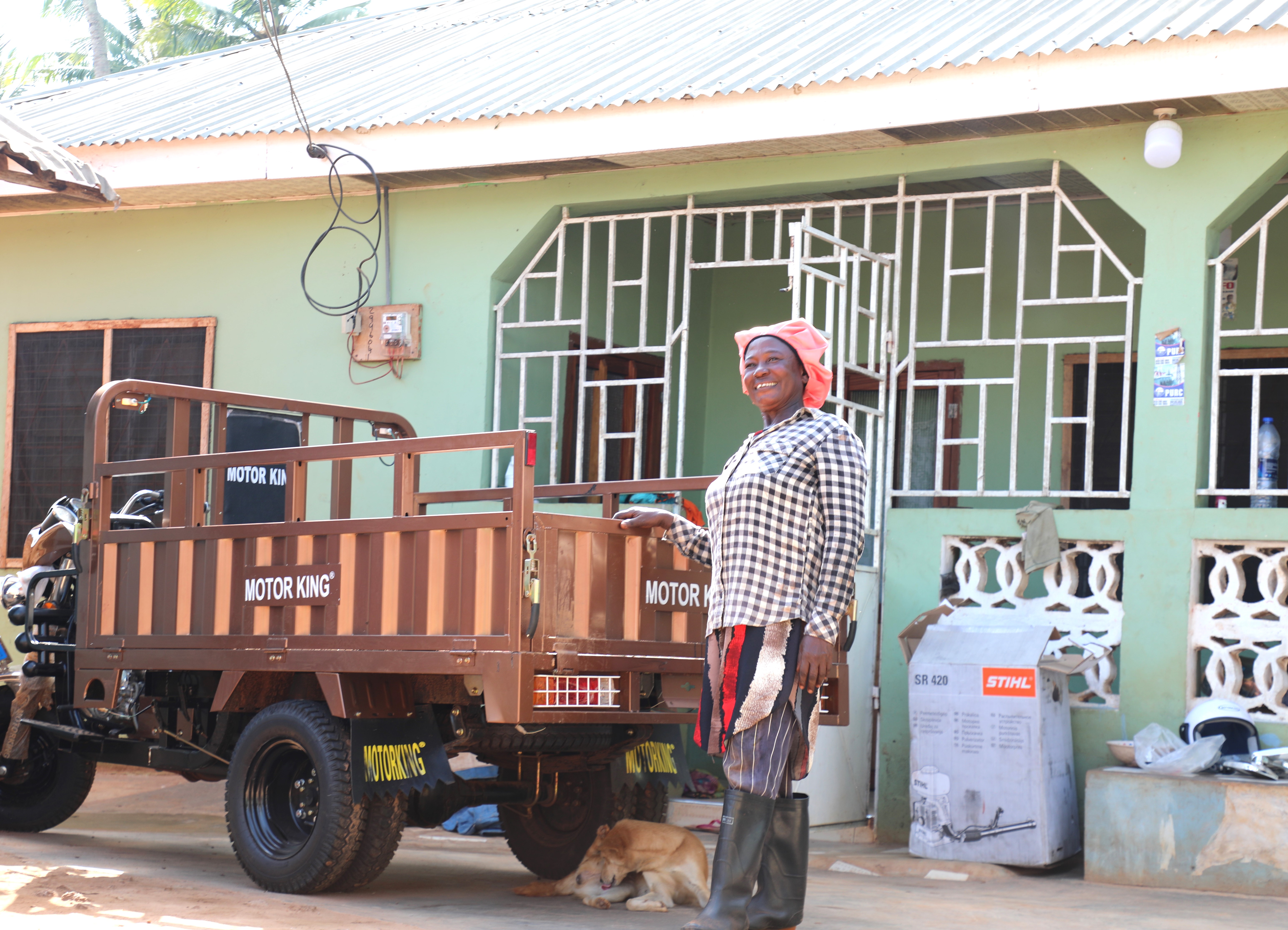
Happy Afua in her house, with some of the machinery (tricycle and others) she received as her prize for winning the 2023 Regional Best Farmer.
Communities at the Frontline
Conserving the degraded cocoa growing landscapes requires empowerment of communities. To this end, through the public-private partnership, communities were supported to form Community Resource Management Area (CREMA). The project supported the creation of two CREMAs, the Ayum-Asuokow and the Pra-Subri CREMAs.
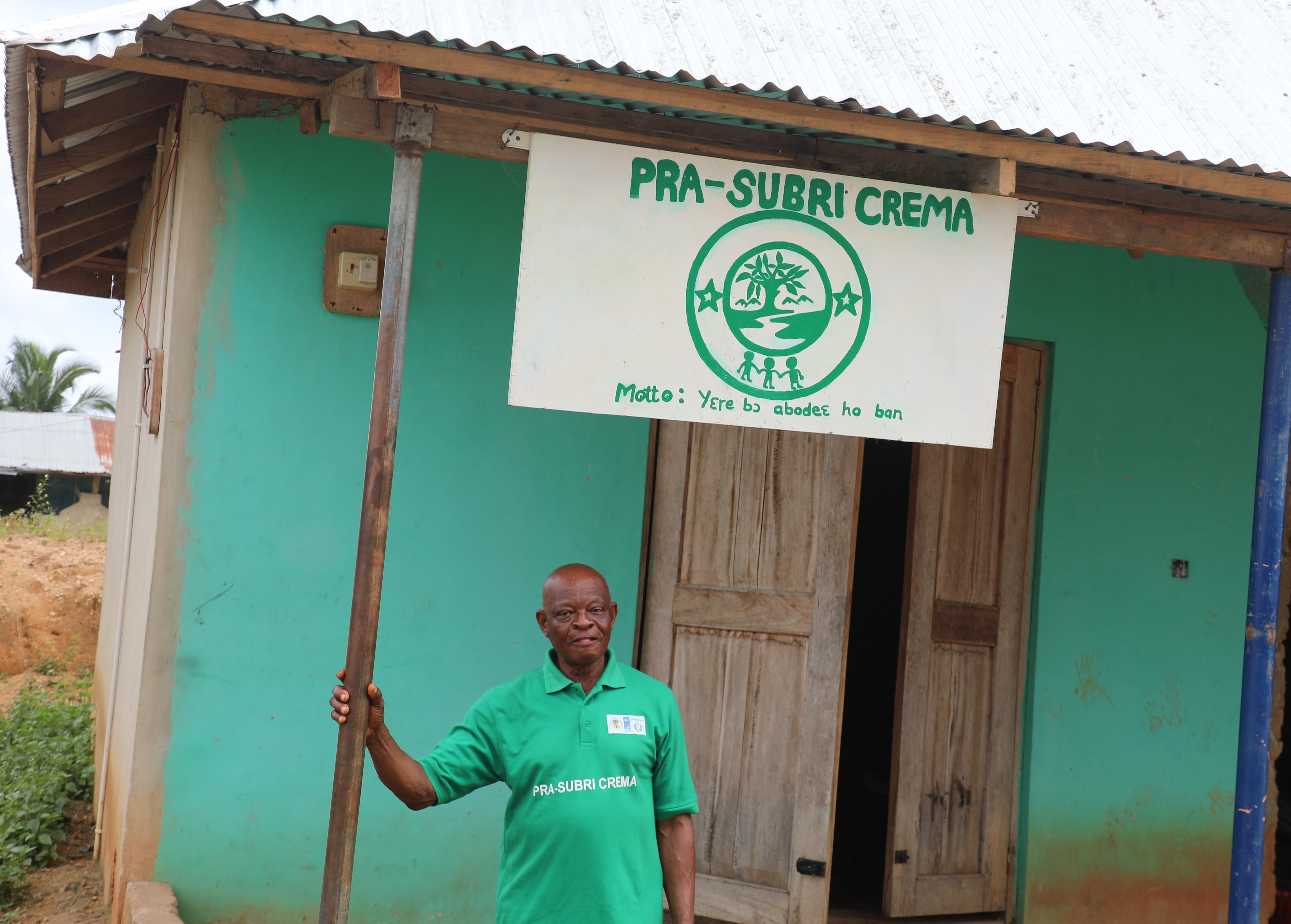
The Pra-Subri CREMA Office at Atobiase in the Western Region of Ghana.
Through the project, 355 communities benefiting from the project have developed their own byelaws and enforced them to protect their natural resources. They were constantly trained to adopt best sustainable farming practices.
“We learnt that when we clear the farm, we should not burn the bush but leave this to turn into organic manure to improve the soil fertility. We also learnt safe use of agrochemicals and the truth is, we didn’t know all these”, stated Alhassan Issah, Cocoa Farmer in Gyaenkontabuo, also in Asunafo North Municipal.
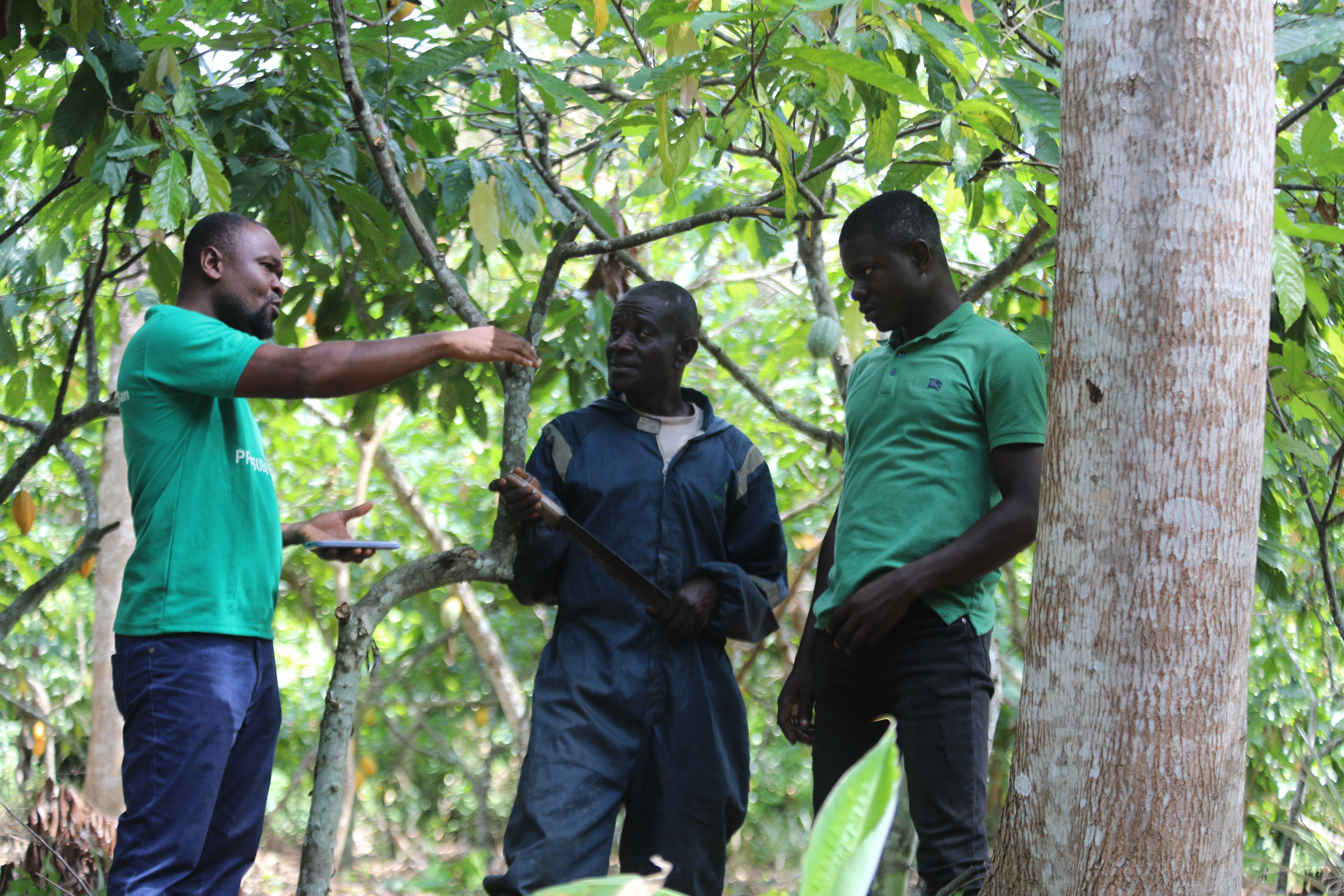
Alhassan Issah (middle) interacting with two of the project's Field Coordinators, Eric Gyamfi (left) and Eric Morrison Mensah (right).
As part of the project’s capacity development initiatives, the CREMAs have formed community fire volunteers to prevent fire outbreaks in farms.
“It is very good to have the CREMA because for the past six years, we no longer have bush fire outbreaks in the communities. This is because the CREMA byelaws forbid bush burning and the fire volunteers continue to sensitize”, noted Nana Barfuor Awiah II, Kyidomhene (Chief) of Mim Traditional Council, a representative of the Paramount Chief on the Ayum-Asuokow CREMA Executive Committee.
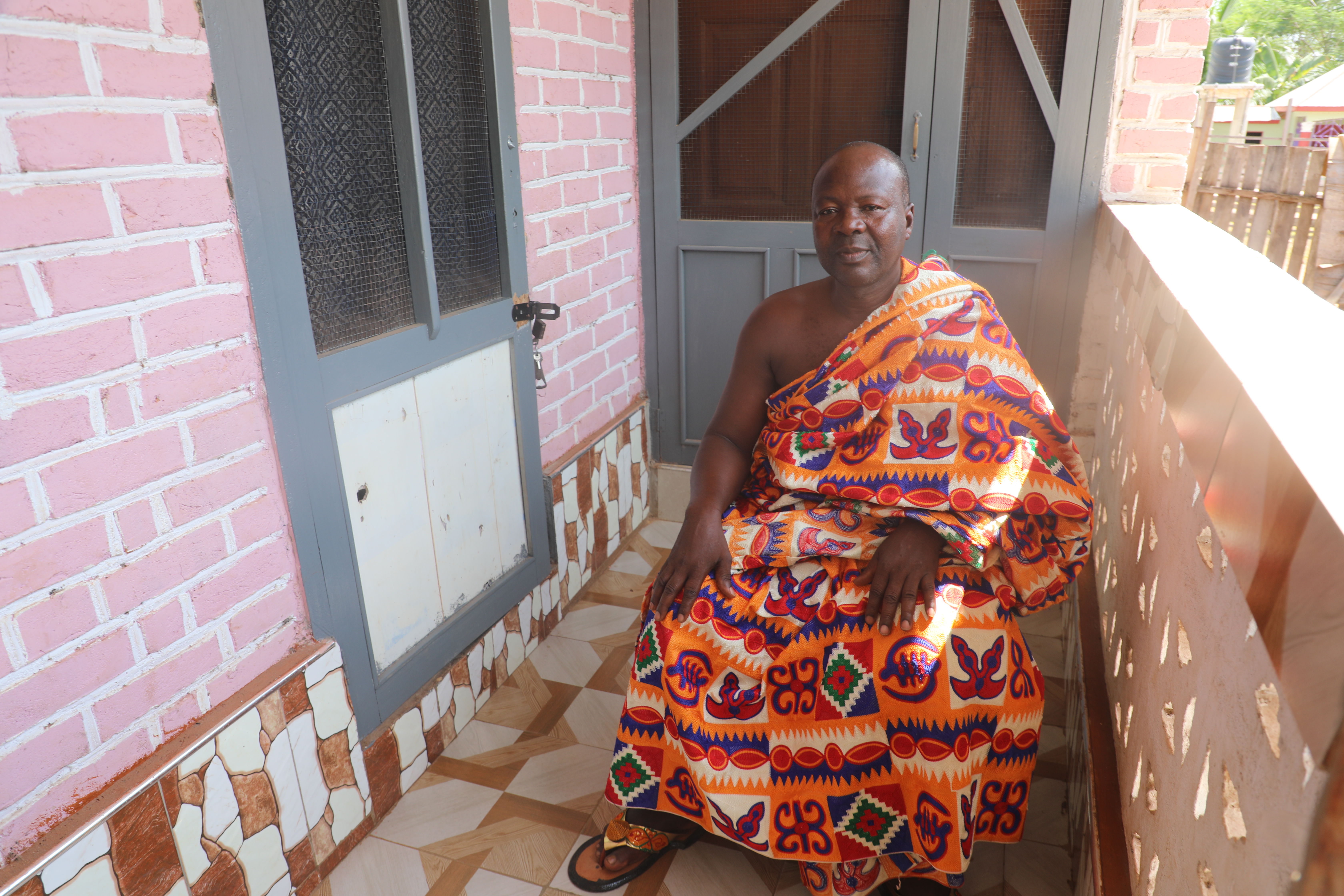
Nana Barfuor Awiah II, Kyidomhene (Chief) of Mim Traditional Council.
We have reached the mid-point of the agenda 2030 for Sustainable Development and the gap between how far we have come and how far we must go is still wide. Government resources alone are not sufficient to close this wide gap, and this is where public-private partnerships become critical. Communities are committed and willing to lead the way but need more resources.
“We have established community farms to generate incomes to support the sustainability of the CREMA but also need more support”, noted Joseph Odompre, Pra-Subri CREMA Committee Chairman.
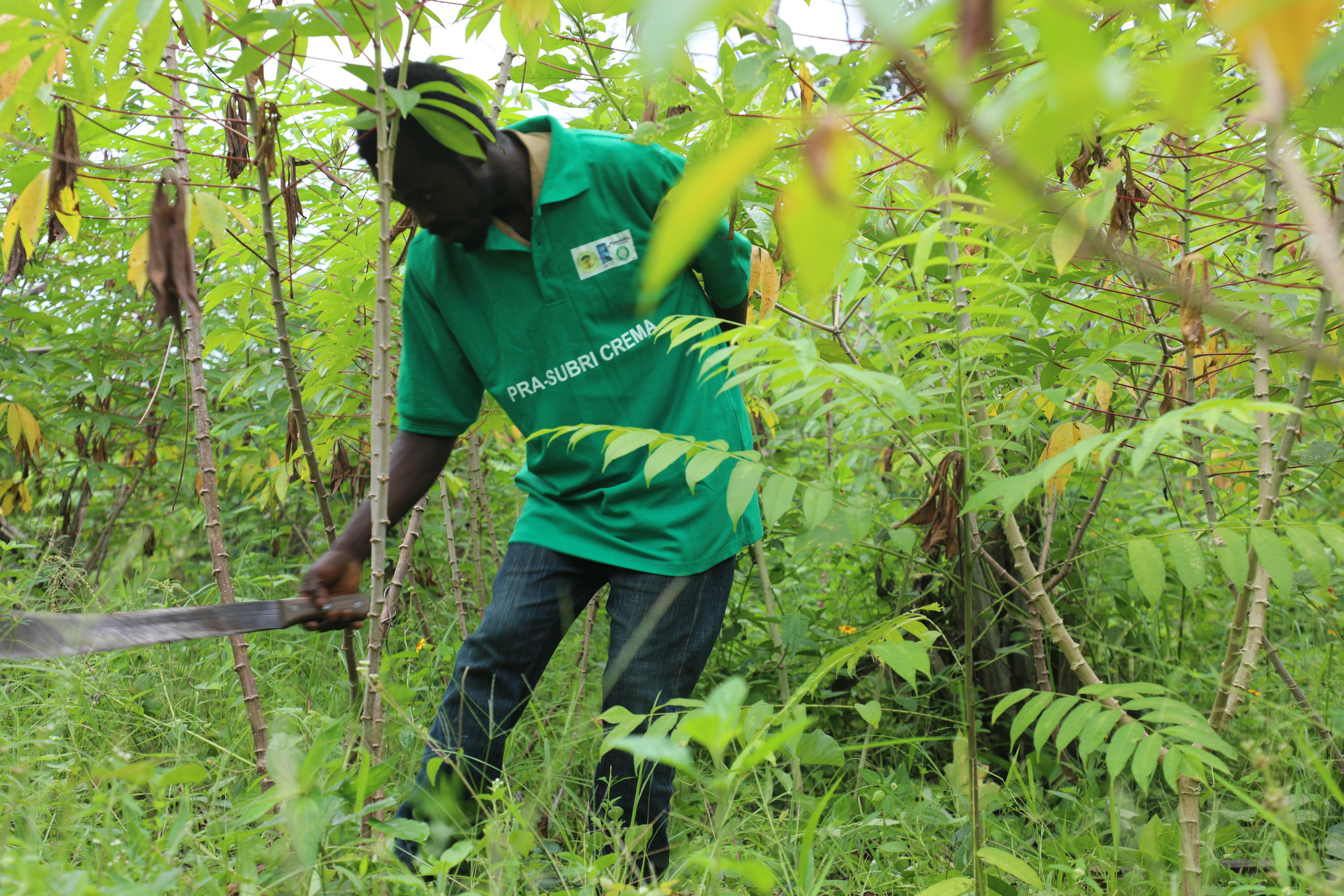
Joseph working in one of the community farms where they have integrated food crops with trees as part of the project's sustainability measures.
Sustainability must be at the forefront of every business activity. More needs to be done to help communities to better cope with the impacts of climate change, and the private sector can be the muscle behind the push towards a sustainable future.
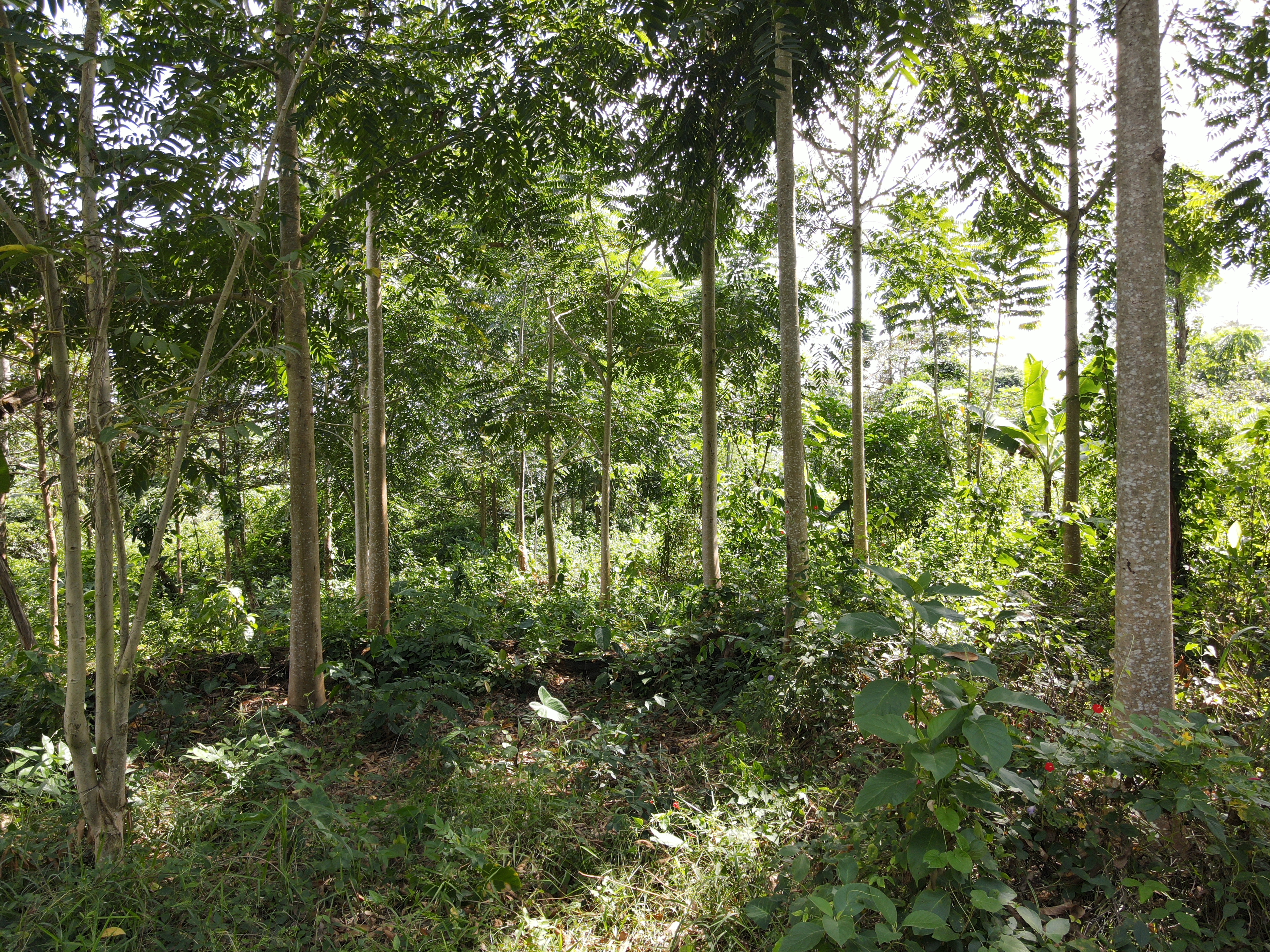
Portion of the restored Ayum Forest Reserve.
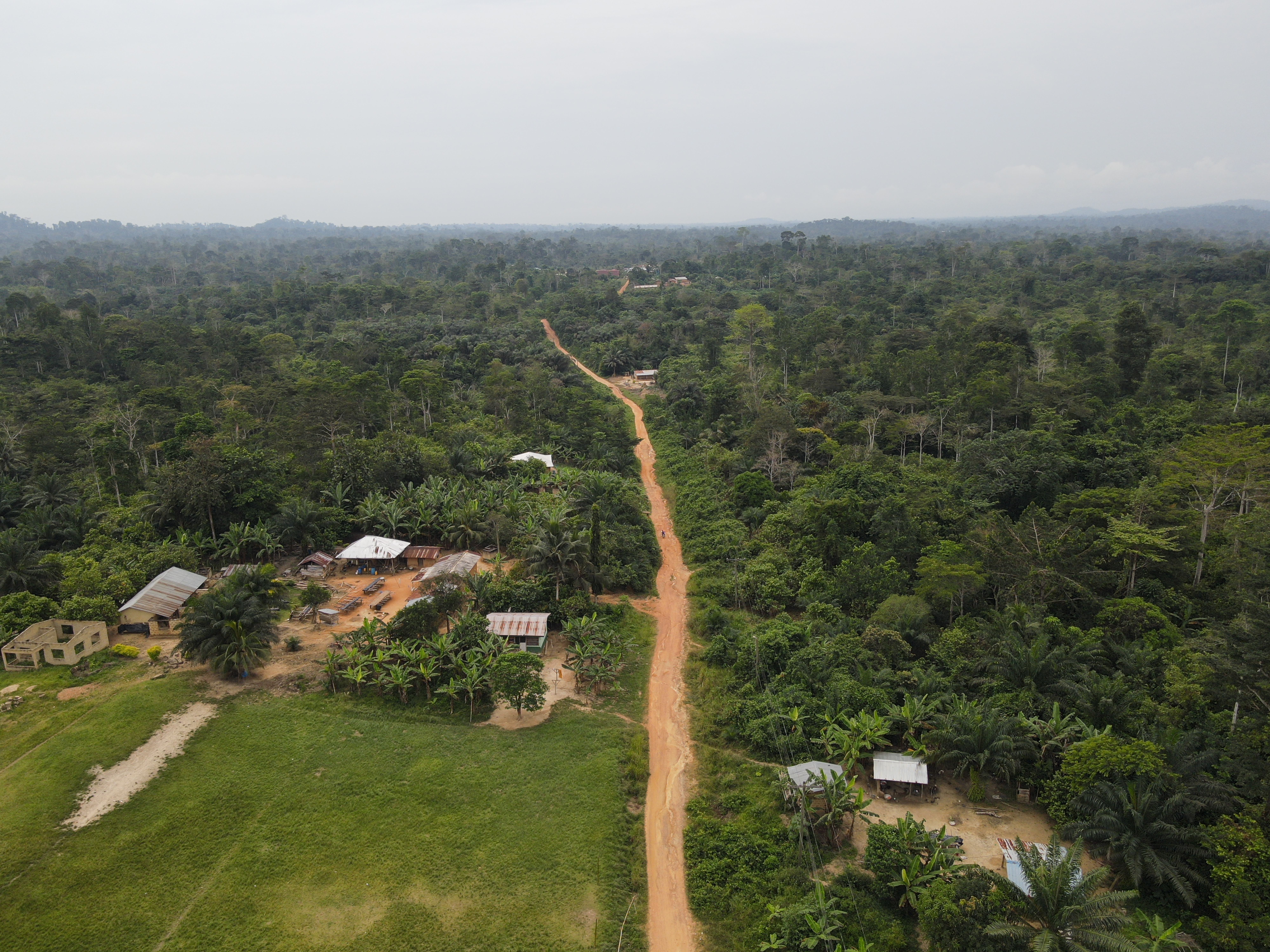
Portion of the 1,600 hectares of cocoa landscapes restored in Ghana.
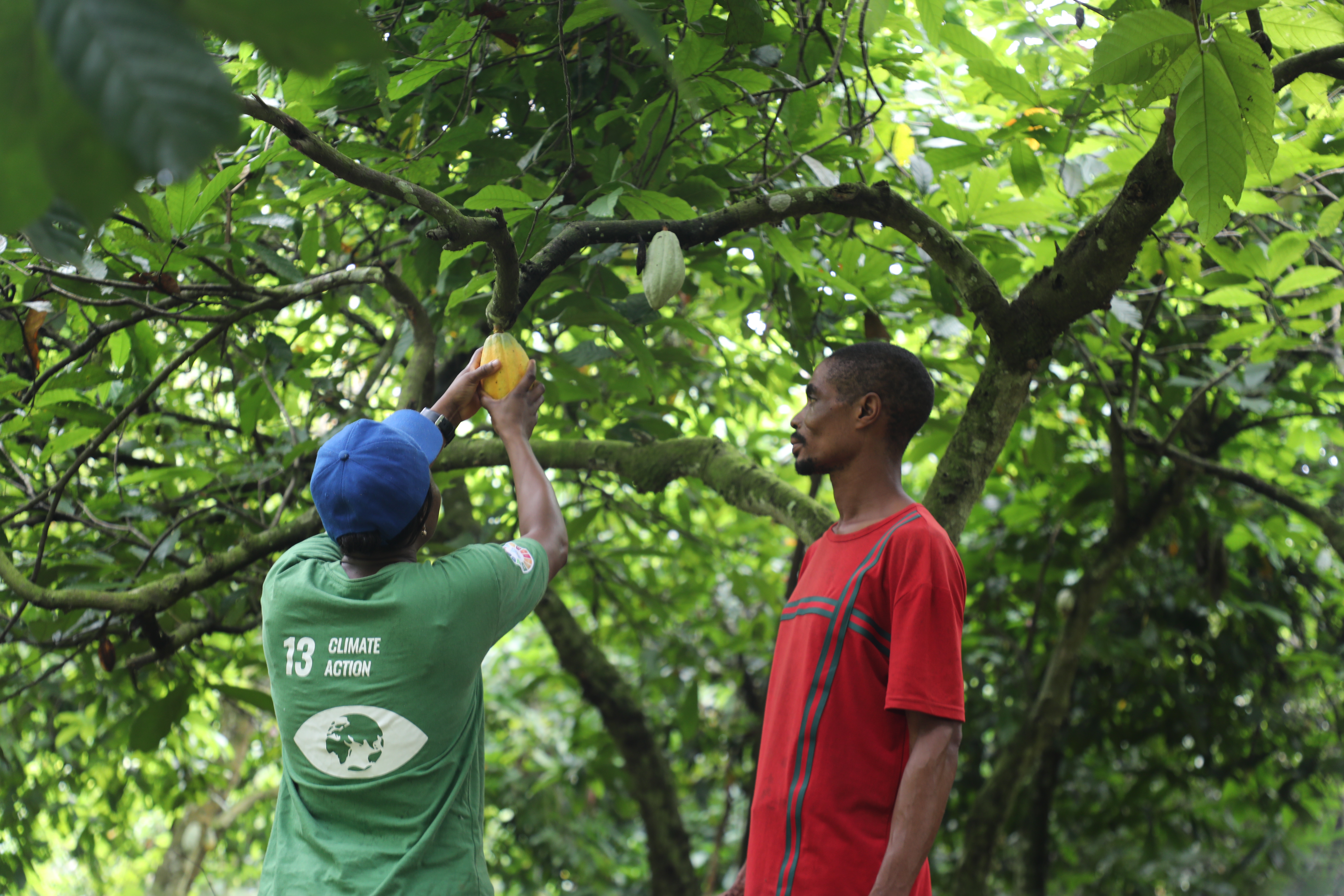
#ClimateAction #ForPeopleForPlanet

 Locations
Locations